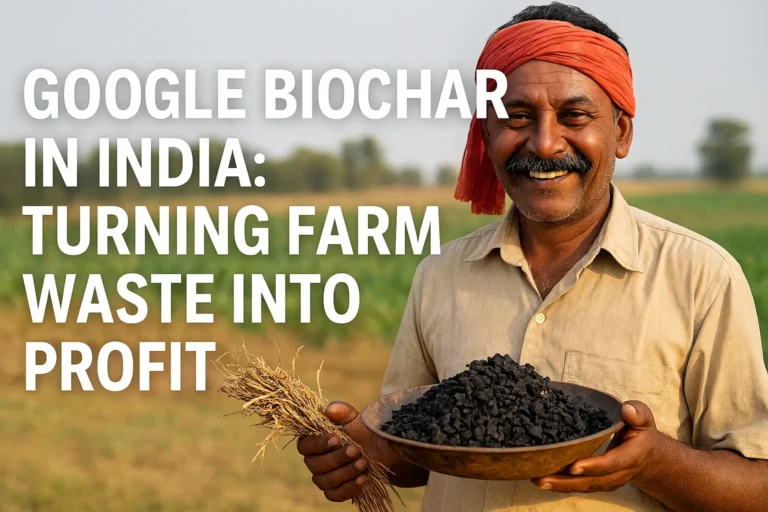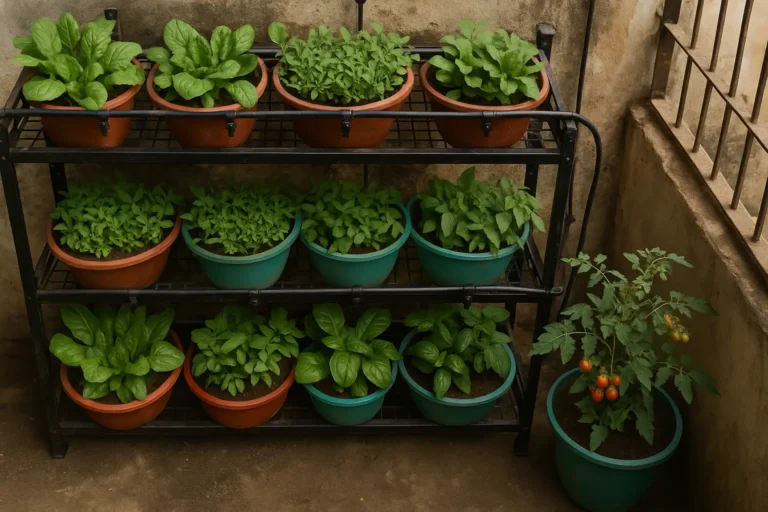The smell of the first rain hitting the dry earth—that sondhi mitti ki khushbu. For us farmers, it’s more than just a scent; it’s the smell of hope, of life itself. After the long, scorching Jeth and Asadh months, the monsoon feels like a blessing from above, the very lifeline of our fields.

But let’s have a heart-to-heart, bhai. As the clouds gather, a knot of worry also tightens in our stomachs, doesn’t it? The cost of everything, from seeds to diesel, is touching the sky. In times like these, we can’t afford a single misstep. The same rain that sprouts our seeds can also drown our dreams.
This isn’t a lecture from some government office. This is a conversation, from one farmer to another, about the 6 common mistakes farmers make during monsoon season. I’ve seen these mistakes cost good, hardworking people their entire season’s mehnat. Let’s understand them so we can turn this monsoon into a blessing, not a gamble.
Mistake 1: The “Dekha Jayega” Attitude Towards Pre-Monsoon Work
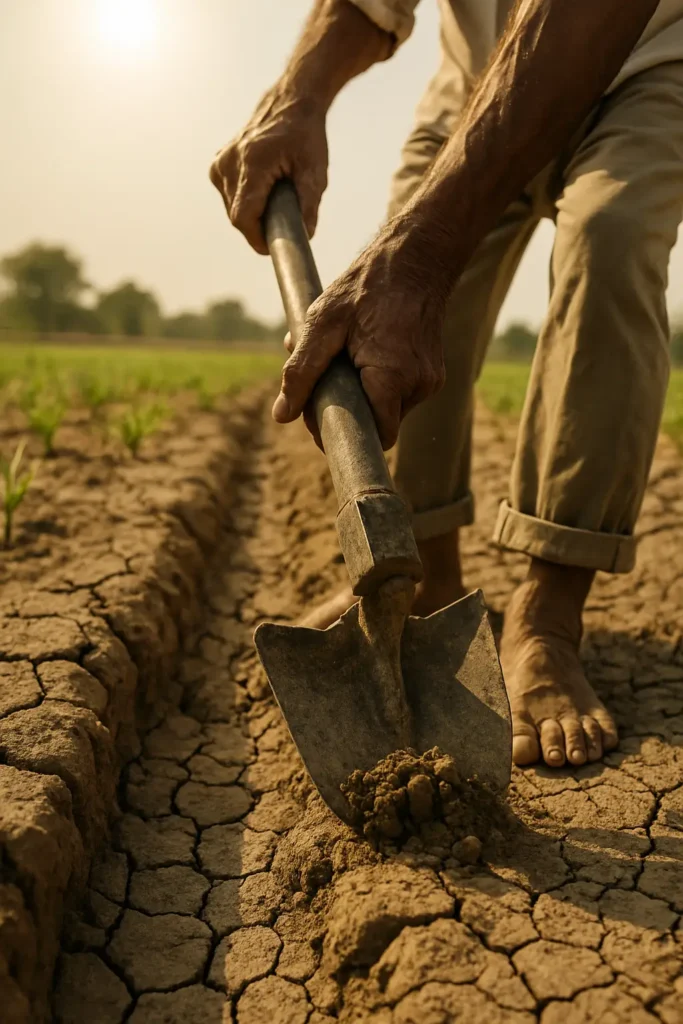
“Baarish aayegi tab dekha jayega” (We’ll see when the rain comes). This ‘chalta hai’ attitude is the biggest enemy of a farmer. Waiting for the clouds to burst before you think about your field is like trying to dig a well when your own house is on fire. Kya fayda?
I still remember my dada ji (grandfather). Before the first hint of monsoon, he’d be out in the blazing sun with his shovel. He used to say, “Beta, paani ko nikaas do, nahi toh woh fasal ko nikaal dega.” (Son, give the water a way out, or it will take the crop out). He knew that a choked drainage channel meant a choked harvest. Are your naalis (channels) clear? Or are they filled with last season’s waste? If so, the rainwater has nowhere to go but to stand in your field and suffocate your crop.
What to do instead:
- Clear the Veins of Your Farm: Before the rain, get out there and clear those drainage channels. Yes, it’s hard work in the heat. But think of these channels as the veins of your farm. Clear veins mean good circulation and a healthy body.
- Strengthen Your Bunds: Walk the boundary of your khet. Are the bunds strong? Or are they cracked? Repair them. Strong bunds hold your precious topsoil and the gobar ki khaad you worked so hard to spread. They stop your farm’s fertility from washing away into the river. This isn’t just labour; it’s protecting your mother earth.
Mistake 2: Gambling with “Ghar Ka Beej”
The first rain falls, and suddenly there’s a mad rush. Chalo, chalo, beej daalo! In this hurry, many of us gamble with our seeds. Using last year’s saved seeds (ghar ka beej) without testing or treating them is one of the riskiest bets a farmer can take.
There is no greater pain than walking through your field and seeing empty patches where seeds never sprouted. All that hope, all that back-breaking work… vanished. The humid monsoon weather is a feast for fungus and disease. An untreated seed is a weak guest, easily attacked.
What to do instead:
- Don’t Be Penny-Wise, Pound-Foolish: Always buy certified, disease-resistant seeds from a trusted source. That small extra cost is an insurance policy for your entire season. It’s a small price for peace of mind.
- Give Your Seeds a Protective Tilak: Even with good seeds, treat them. Think of it as putting a protective tilak on a child before a journey. A simple bio-treatment with Trichoderma or a chemical one protects the seedling when it’s most vulnerable.
- Sow with Care: Don’t just throw the seeds in. Too shallow, and the rain washes them away. Too deep, and the poor seedling runs out of energy just trying to reach the sunlight. The right depth and spacing give your crop room to breathe and grow strong.
Mistake 3: The Urea Trap – A Very Common Mistake Farmers Make During Monsoon
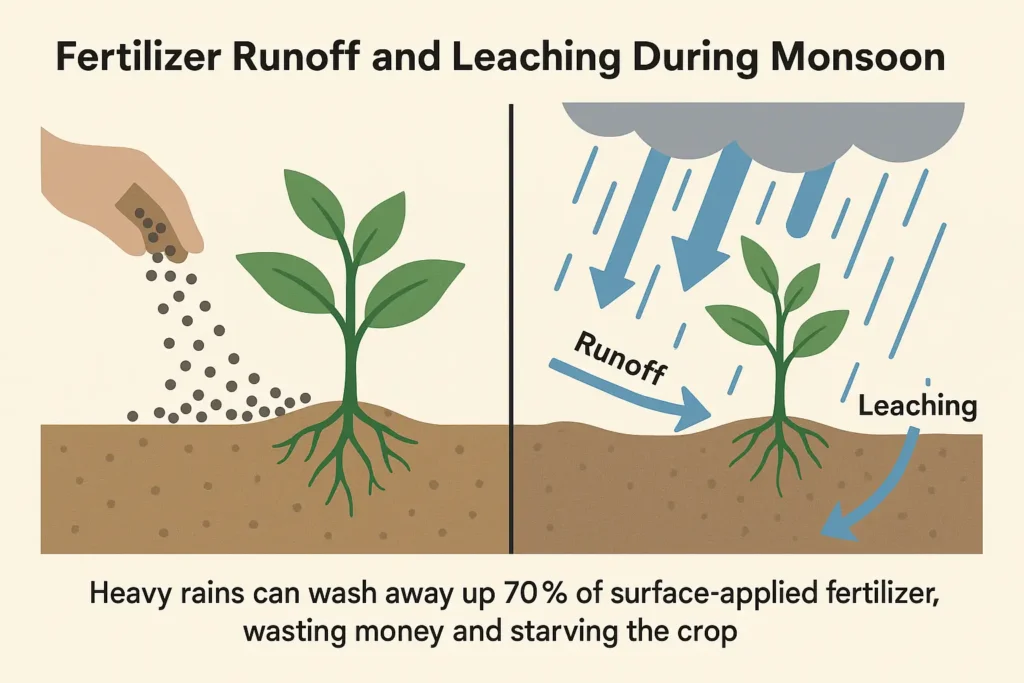
The plants are up, and they look a little weak. What’s our first instinct? Run for the bag of Urea! We throw it on, see that instant flush of green, and our heart swells with pride. But during the monsoon, this is a trap. It’s a very common mistake farmers make during monsoon season.
Heavy rain is like a thief. It washes away the Urea you just applied. This is called runoff. It’s like taking your hard-earned cash and letting the river carry it away. Even worse is when the water seeps deep into the soil, taking the nitrogen with it, far away from the roots. You spend more money, but the plant gets less food.
What to do instead:
- Feed Your Crop Like You Feed a Child: Do you give your child a full day’s food in one go? No, right? You give breakfast, lunch, dinner. Do the same for your crop. Instead of one heavy dose, split the Urea into 2-3 smaller meals during breaks in the rain. This way, the plant actually eats the food you give it.
- Build a Healthy Stomach for Your Soil: Before sowing, mix in plenty of compost or well-decomposed gobar ki khaad. This isn’t just fertilizer; it’s a soil conditioner. It makes the soil spongy and alive. Healthy soil holds water without getting choked and provides a slow, steady meal to the crop, just like a mother’s love. For more on this, the Department of Agriculture & Farmers Welfare portal has some good, simple guides.
Understanding the Soil’s Cry for Air – The Science of Waterlogging
Let’s pause and talk about why standing water is the enemy. Every farmer knows it’s bad, but if you understand the ‘why’, you can fight it better.
Think of your soil. It’s not solid rock. It’s full of tiny empty spaces, or pores. These pores hold both water and, crucially, air. The roots of your plant need to breathe this air to create energy. It’s this energy that helps them pull nutrients from the soil.
Now, when your field is flooded, water fills up all these spaces, pushing the air out. The roots are now underwater, unable to breathe. They are suffocating. A suffocating root cannot absorb nutrients, even if your soil is full of them. The plant’s leaves turn yellow, and it looks starved, not because there’s no food, but because it can’t eat. This is why those drainage channels are the lungs of your farm.
Mistake 4: Letting Weeds Win the Race
The monsoon is a festival for weeds. They are the bin bulaye mehmaan (uninvited guests) who grow faster than your crop, eat all the food, and drink all the water. A common mistake is waiting to deal with them. By the time they are big, the damage is already done. They have already stolen from your crop, and its growth is stunted forever.
What to do instead:
- The First 30 Days are War: The first month is a race between your crop and the weeds. You have to make sure your crop wins. Be vigilant.
- Attack from All Sides: Don’t just rely on one method. A little hand-weeding here, a little work with a hoe there. If you must use a herbicide, use the right one at the right time. Your local Krishi Vigyan Kendra (KVK) can give you the correct advice for your specific crop.
Mistake 5: Ignoring the First Signs of Sickness
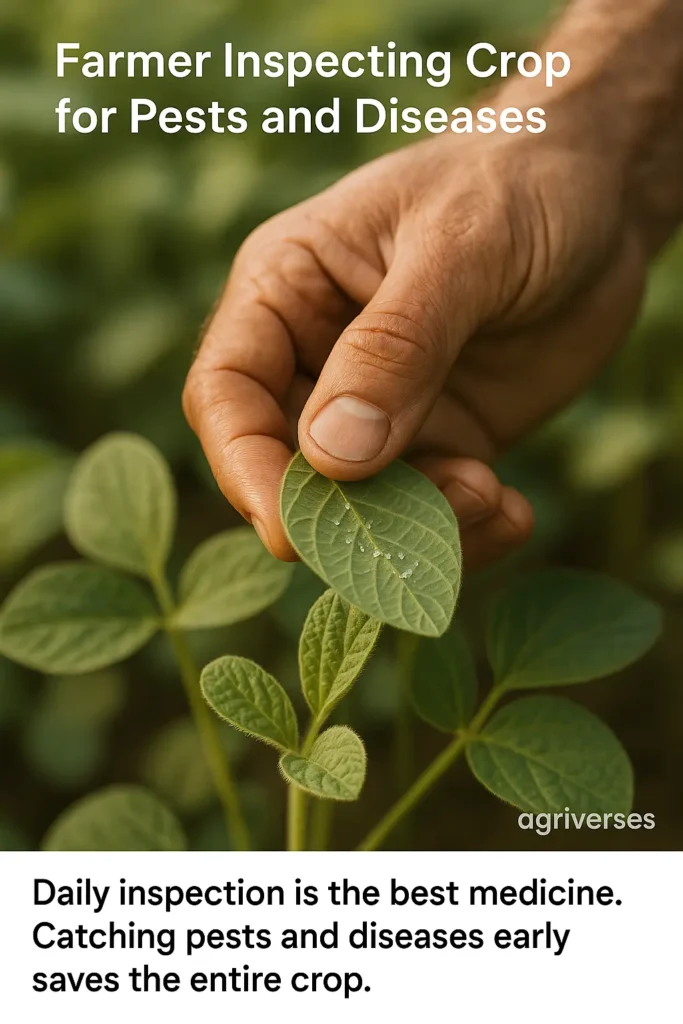
The warm, damp monsoon weather is an open invitation for pests and diseases. We often get so busy with weeding and fertilizer that we fail to look closely at the leaves. We ignore that small spot, that tiny insect, thinking it’s nothing. This neglect is a critical mistake. By the time the problem is visible from a distance, it’s often too late to control it cheaply and effectively.
What to do instead:
- Be a Plant Doctor: Walk your field every single day. Look under the leaves. Check the stems. Are there any spots, any discoloration, any pests? Catching a problem early is half the battle won.
- Use Nature’s Remedies First: Before you reach for strong chemical pesticides, explore other options. Neem oil spray is a fantastic, age-old solution. Planting marigolds around your field can also help keep certain pests away. A healthy plant in healthy soil is naturally more resistant to disease.
Mistake 6: A Common Mistake for Farmers – Spraying at the Wrong Time
The sky is overcast, you see some pests on your cotton, and you rush to spray. An hour later, a heavy downpour washes everything away. Your expensive pesticide, your time, your effort—all down the drain. This is one of the most frustrating and common mistakes farmers make during monsoon season. The rain not only washes off the chemical, making the spray completely useless, but it can also wash the pesticide into your soil and water channels, causing harm. It’s a double loss—no protection for the crop and pollution of the farm.
What to do instead:
- Become a Weather Watcher: Always check the weather forecast. Try to spray when you have a clear window of at least 4-6 hours without rain. Early mornings on a clear day are often best.
- Use ‘Stickers’: Ask your local agri-shop for adjuvants or ‘stickers’. These are special agents you can mix with your pesticide. They help the chemical stick to the leaves and resist being washed off by a light drizzle. It’s a small extra cost that makes your spray far more effective.
From Surviving the Monsoon to Thriving in It: A Vision for Us
My fellow farmers, avoiding these common mistakes is about more than just this one harvest. It’s about a change in thinking. It’s about shifting from farming by luck to farming with knowledge. It’s about building a farm that can withstand the whims of the weather.
When we take care of our soil, when we choose our seeds wisely, and when we protect our crops with vigilance, we are no longer just farmers. We become Krishi Vaigyanik—farm scientists in our own right. We build a future where our children see farming not as a burden, but as a respected and profitable profession. This knowledge is our true power.
A Call to Our Community:
Farming is a journey we walk together. If this advice resonated with you, share it with your farmer brothers on WhatsApp. Let’s learn from each other and grow together. Because as they say, Ek se bhale do!


